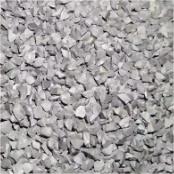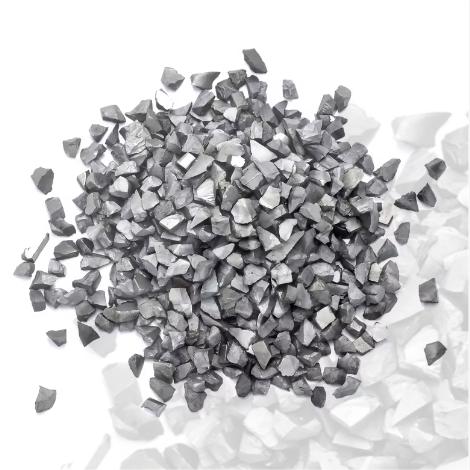Banishing the Bling Blues: Your Battle Plan Against Fake Gold Tarnish
(How To Get Rid Of Tarnish On Fake Gold Plated Metal)
That stunning fake gold necklace you love? The bracelet that adds sparkle to your outfit? They looked amazing when you bought them. But then, time happened. Maybe it was a damp drawer, perhaps a splash of perfume, or just the air itself. Suddenly, that brilliant gold shine isn’t so brilliant anymore. It looks dull, maybe even a bit greenish or black in spots. That’s tarnish. It’s the enemy of costume jewelry and decorative items. Don’t despair! Getting rid of tarnish on fake gold plated metal isn’t rocket science. It just needs the right approach. This guide is your toolkit to restore the shine and keep it shining longer.
**1. What Exactly Is Tarnish?**
Think of tarnish as a crusty blanket thrown over your jewelry. It’s not dirt or grime you can just wipe off. Tarnish is a chemical reaction happening right on the surface of your metal. When metals like copper, brass, or nickel (common bases under fake gold plating) meet oxygen in the air, they slowly start to change. They form a new layer called an oxide. This layer is usually darker and duller than the original metal. Sometimes, other things speed this up. Things like moisture (humidity), salty air, or chemicals found in lotions, perfumes, and even your skin’s natural oils. Sulfur compounds are big troublemakers too. They come from pollution, some foods, or even wool. When these elements meet the metal, the reaction happens faster. The oxide layer thickens, becoming visible tarnish. For fake gold plating, this tarnish isn’t just on the surface; it can eat into the thin gold layer underneath, making the piece look worn and cheap.
**2. Why Fake Gold Plated Metal Gets Tarnished**
Real solid gold doesn’t tarnish easily. That’s part of why it’s so valuable. Fake gold plated metal? It’s a different story. Think of it like a delicious cake with a thin layer of frosting. The frosting (the gold plating) is beautiful but fragile. The cake underneath (the base metal) is what the tarnish attacks. Most fake gold jewelry uses cheap base metals. Copper and brass are very common. These metals love to react with oxygen and sulfur. They tarnish quickly. The gold plating is just a super thin coating on top, measured in microns (thinner than a human hair!). It offers some protection, but not much. Any scratch, any wear, exposes the base metal underneath. Once exposed, that base metal starts tarnishing. Even if the plating is intact, harsh chemicals or constant rubbing can wear it down fast. Sweat, chlorine from pools, hairspray, makeup – these all contain chemicals that speed up the tarnishing process on the thin gold layer and the base metal. So, fake gold tarnishes because the base metal is reactive, the gold plating is thin and easily damaged, and everyday life exposes it to tarnish-causing elements.
**3. How to Clean Tarnish Off Fake Gold Plated Metal**
This is the part you really want. How to make it shiny again? Be careful. Fake gold plating is delicate. Harsh methods will strip it right off. Always try the gentlest option first.
* **Soapy Water First:** Start simple. Mix a few drops of mild dish soap into lukewarm water. Dip a soft cloth (like microfiber) or a soft-bristled toothbrush into the soapy water. Gently rub the tarnished areas. Avoid soaking the piece for too long. Rinse thoroughly under cool running water. Pat completely dry with a soft towel. Air drying can leave water spots. This works for light dirt and very mild tarnish.
* **The Baking Soda Paste Trick:** For tougher tarnish, baking soda is often helpful. Make a paste. Mix a small amount of baking soda with a tiny bit of water. You want it thick, like toothpaste. Using a soft cloth or your finger, gently rub the paste onto the tarnished spots. Use small, soft circles. Don’t scrub hard. Let it sit for a minute or two. Rinse very well with cool water. Dry completely. Baking soda is a mild abrasive. It lifts tarnish without harsh chemicals. Test it on a small, hidden spot first if you’re worried.
* **Vinegar Soak (Use Sparingly):** White vinegar can sometimes help, especially if the tarnish has a greenish tinge (common with copper). But vinegar is acidic. It can damage plating fast. Use it only as a last resort for stubborn spots. Mix equal parts white vinegar and water in a small bowl. Dip a cotton swab into the mixture. Dab it *only* on the tarnished spot. Don’t soak the whole piece. Leave it for just a few seconds. Rinse immediately and thoroughly. Dry completely. Never use straight vinegar.
* **Commercial Jewelry Cleaners – CAUTION:** Many jewelry cleaners are too strong for fake gold plating. They often contain harsh chemicals like ammonia or acids. These can dissolve the thin gold layer quickly. If you use one, choose a cleaner specifically labeled safe for costume jewelry or gold plating. Follow the instructions exactly. Never soak longer than recommended. Test on an inconspicuous area first. When in doubt, skip it. Stick to the gentler methods above.
* **Important Cleaning Rules:** Always be gentle. Never use harsh scrubbers like steel wool or rough brushes. Avoid bleach, chlorine, or abrasive cleaners. Don’t soak plated items for long periods. Always rinse thoroughly and dry completely after cleaning. Moisture left behind can cause more tarnish.
**4. Applications: Protecting Your Treasures**
Cleaning off tarnish is great. Preventing it is even better. How do you keep your fake gold looking gold?
* **Keep it Dry:** Moisture is tarnish’s best friend. After wearing, wipe your jewelry with a soft, dry cloth to remove oils and sweat. Before showering, swimming, or washing dishes, take it off. Pools and hot tubs are especially bad because of chlorine.
* **Store it Smart:** Don’t just toss jewelry into a drawer where pieces can scratch each other. Scratching exposes the base metal. Store each piece separately. Soft cloth bags are good. Zip-lock plastic bags can work, but squeeze out excess air first. Better yet? Use anti-tarnish storage. Look for jewelry boxes lined with anti-tarnish fabric, or use special anti-tarnish strips inside your storage box. These strips absorb tarnish-causing gases from the air. Keep jewelry away from humid places like bathrooms.
* **Mind the Chemicals:** Put your jewelry on *after* applying perfume, hairspray, lotion, or makeup. These products contain chemicals that attack plating. Take jewelry off before cleaning with household chemicals.
* **Handle with Care:** The thin gold layer wears off over time, especially on rings and bracelets that rub against things. Be mindful. Avoid activities where your jewelry might get knocked or scraped. Taking it off for sports or heavy work helps.
* **Regular Gentle Cleaning:** Don’t wait for heavy tarnish. Giving your pieces a quick wipe with a soft, dry cloth after wearing helps remove oils before they cause problems. Occasionally, a gentle wash with soapy water can keep minor tarnish at bay.
**5. FAQs: Your Tarnish Troubleshooting Guide**
* **Can I use lemon juice or ketchup to clean tarnish?** Some people suggest lemon juice or even ketchup (because of the acid). Like vinegar, acids can be risky. They might remove tarnish, but they can also damage the gold plating. Baking soda paste is usually safer and just as effective for moderate tarnish.
* **Will toothpaste work?** Some toothpastes are very abrasive, designed to scrub teeth. Using them on delicate plating can scratch it badly. Avoid toothpaste unless it’s a very gentle, non-gel, non-whitening type. Even then, baking soda paste is a better choice.
* **My piece is heavily tarnished. Can I save it?** It depends. If the base metal is exposed and badly corroded, the damage might be permanent. The gold plating might already be worn off in spots. You can try cleaning it gently. It might look better, but it likely won’t look like new again. Sometimes, professional jewelers can re-plate items, but the cost might be more than the piece is worth.
* **Does fake gold ever *not* tarnish?** All metals can tarnish eventually. Higher quality fake gold plating uses thicker gold layers and sometimes less reactive base metals (like sterling silver under gold plating, called vermeil). These will tarnish much slower than cheap copper-plated pieces, but they still need care. Nothing lasts forever without maintenance.
(How To Get Rid Of Tarnish On Fake Gold Plated Metal)
* **Why does some fake gold turn my skin green?** That green stain isn’t the gold plating. It’s the base metal underneath reacting with your skin’s acids. Copper is a common culprit. A good barrier (like clear nail polish) inside rings or bracelets can help prevent this. It also shows the plating might be worn thin or damaged.
Inquiry us
if you want to want to know more, please feel free to contact us.


